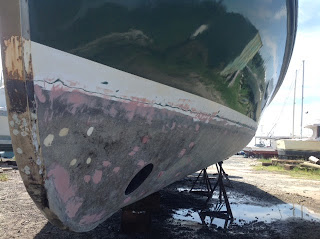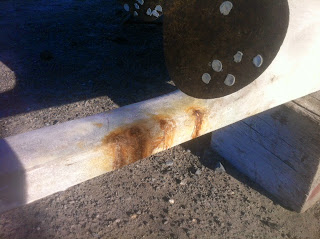It's been a long road but Nellie went feet wet yesterday. She passed her leak check--but not without incident. Spilling water rudely reminded me that I still needed to install the heat exchanger zinc. We ran her through her paces in the river without incident before returning to the yard's dock. The winds are contrary and blowing up to 20kts. Not an ideal day for the four hour sea trial home.
Antifouling paint job summary: We went through four gallons of Pettit Ultima SR60 bottom paint. We used 1/4" nap paint rollers and where necessary, paint brushes, to apply the paint. This gave us two coats all around and four,1' wide coats, on the waterline. There was no paint to spare.






































